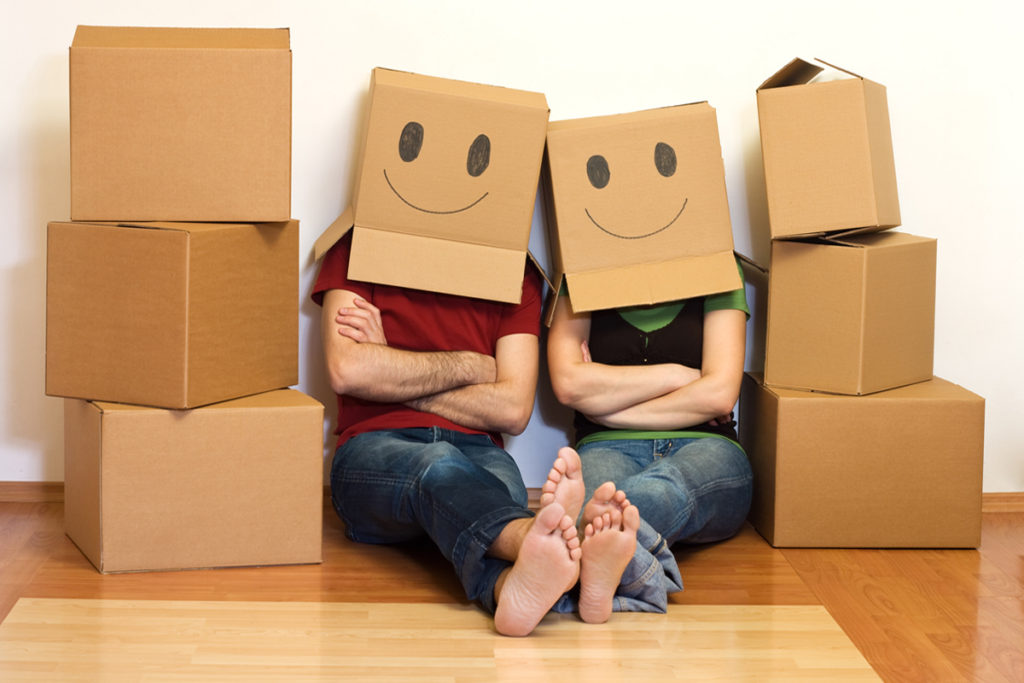Moving long distances can be both exciting and stressful. You’re not just packing up your home; you’re starting a new chapter in a different location. One aspect that often gets overlooked is the importance of having a good storage plan. Whether you’re downsizing, moving temporarily, or just need extra space, storage units can be incredibly useful. Let’s explore the benefits of using storage during your long-distance move and offer some practical storage tips for a smooth transition.
Why Consider Storage?
Firstly, why should you even consider using storage? A long-distance move involves numerous logistical challenges. You may not have immediate access to your new home, or perhaps it’s not ready for all your belongings. A storage unit can bridge this gap, providing a safe space for your items. Moreover, it offers flexibility, allowing you to move at your own pace.
Benefits Of Using Storage During Your Long-Distance Move
Flexibility and Convenience
One of the primary benefits of storage during a long-distance move is flexibility. You may not be able to transport all your belongings at once, especially if you’re driving across states or countries. Storage units provide a convenient place to keep your items until you’re ready to move them. This is particularly useful if your new home isn’t immediately available or if you’re still deciding what to take with you.
Downsizing Made Easy
Another situation where storage becomes invaluable is when you’re downsizing. Moving to a smaller home means you can’t bring everything with you. However, you might not want to part with all your belongings right away. A storage unit allows you to keep sentimental items, seasonal decorations, or furniture that doesn’t fit in your new place. This way, you can decide at your leisure what to keep, donate, or sell. It’s a great storage tip for long-distance moves that can make the transition smoother.
Safekeeping of Valuables
During a long-distance move, your belongings are at risk of damage or loss. This is especially true for valuable items like antiques, artwork, or electronics. Storage facilities offer climate-controlled units that can protect these items from extreme temperatures and humidity. Additionally, most storage units have security measures like surveillance cameras, alarms, and restricted access. This added layer of security gives you peace of mind, knowing your valuables are safe.
Reducing Moving Costs
Surprisingly, using storage can actually help reduce the overall cost of your move. How? By minimizing the number of items you transport at once. You can store items you don’t immediately need and move them later. This can reduce the size of the moving truck you need to rent, the number of trips you have to make, and the amount of packing materials required. In the long run, these savings can add up, making storage a cost-effective option.
Staging Your Home for Sale
If you’re selling your current home, a well-staged property can attract more buyers and potentially sell faster. However, staging often requires decluttering and removing personal items. Storage units offer a convenient solution for keeping your belongings safe while your home is on the market. You can store excess furniture, family photos, and other personal items, making your home look more spacious and appealing. This is another key benefit of storage during a move, as it can directly impact your home’s selling potential.
Handling Delays and Uncertainties
Moving long distances often comes with unexpected delays and uncertainties. Perhaps your new home isn’t ready on time, or your moving schedule changes. A storage unit provides a buffer, giving you a place to store your belongings while you sort out any issues. This flexibility can be a lifesaver, allowing you to adapt to changing circumstances without the stress of having nowhere to put your things.
Seasonal Storage
Seasonal items like holiday decorations, winter clothes, or sports equipment can take up a lot of space. During a long-distance move, it might not make sense to bring these items with you immediately. A storage unit can keep them safe and out of the way until you need them. This is another practical storage tip for long-distance moves, helping you stay organized and reduce clutter in your new home.
Short-Term vs. Long-Term Storage
It’s also important to consider the duration of your storage needs. Short-term storage is ideal if you need temporary space while you finalize your move. On the other hand, long-term storage is perfect for items you don’t plan to use for a while, such as family heirlooms or seasonal decorations. Understanding your storage needs can help you choose the right unit and plan accordingly.
Easy Access to Your Belongings
Another benefit of using storage during a long-distance move is the easy access it provides. Most storage facilities offer flexible hours, allowing you to retrieve your items whenever you need them. This is particularly useful if you’re still in the process of setting up your new home and need to access certain items gradually. Moreover, with organized packing and labeling, you can easily locate specific items without having to unpack everything.
How to Choose the Right Storage Unit
Choosing the right storage unit is crucial for a smooth moving experience. Here are some storage tips for long-distance moves to help you make the best choice:
- Size Matters: Consider the amount of space you need. It’s better to overestimate and have extra room than to find yourself crammed for space.
- Climate Control: If you’re storing sensitive items, opt for a climate-controlled unit. This protects against extreme temperatures and humidity.
- Location: Choose a storage facility that is conveniently located either near your current home or your new destination. This makes it easier to transport your items.
- Security Features: Look for units with robust security measures, including surveillance cameras, gated access, and on-site management.
- Access Hours: Check the facility’s access hours to ensure you can get to your belongings when needed.
- Insurance: Make sure your items are insured, either through the storage facility or your own insurance policy.
Packing Tips for Storage For a Long-Distance Move
Packing for storage requires a bit more care than packing for a simple move. Here are some useful tips:
- Label Everything: Clearly label boxes with their contents and the room they belong to. This will save you time when you need to find specific items.
- Use Quality Materials: Invest in sturdy boxes and packing materials. This will protect your items during transportation and storage.
- Avoid Overpacking: Don’t overfill boxes, as this can cause them to break. Instead, use more boxes and keep them at a manageable weight.
- Protect Fragile Items: Use bubble wrap, packing paper, or blankets to protect delicate items. Store them in a way that minimizes the risk of damage.
- Stack Strategically: Place heavier boxes on the bottom and lighter ones on top. This prevents crushing and makes it easier to access items.
How to Optimize Storage Space For a Long-Distance Move
Optimizing storage space is crucial to make the most of your rented unit, save on costs, and ensure your belongings are safe and accessible. Here are some detailed strategies to help you pack and organize your storage unit efficiently:
1. Disassemble Large Furniture
Disassembling furniture can save significant space in your storage unit. Items like beds, tables, and shelving units often take up more room when left intact.
For beds and tables, unscrew and remove legs and headboards. Store these parts together and label them clearly for easy reassembly. Use moving blankets or bubble wrap to protect disassembled pieces from scratches and damage. Place screws, bolts, and other small parts in labeled bags and tape them to the corresponding furniture pieces.
2. Utilize Vertical Space
Maximizing vertical space in your storage unit can free up more floor space and make it easier to access your items.
Place heavier boxes at the bottom and lighter ones on top. This prevents damage and makes it easier to find items. If allowed, bring in free-standing shelving units to organize smaller items and prevent stacking too high. Items like skis, snowboards, and long mirrors should be stored upright to save space and prevent damage.
3. Use Clear Bins and Label Everything
Clear bins are a fantastic option for storage as they allow you to see the contents without opening the boxes. This is especially useful for frequently accessed items.
Even with clear bins, labels help you quickly identify the contents. Include a list of items inside each bin. Pack similar items together to make retrieval easier. For example, keep kitchen items in one bin and holiday decorations in another. Consider using a color-coding system for different rooms or categories. This adds another layer of organization and efficiency.
4. Create a Master Inventory List
Keeping a detailed inventory of all the items stored in your unit can save time and reduce stress.
As you pack each box or bin, write down the contents. This is especially important for valuable items. Take photos of the items inside each box. This visual record can be invaluable, especially for insurance purposes. Store the inventory list digitally, using cloud storage or a note-taking app. This ensures you can access it from anywhere.
5. Leave a Pathway for Easy Access
Arranging your items in a way that leaves a clear pathway through the unit can make a huge difference in accessibility.
Items you might need to access sooner should be placed near the entrance of the unit. Leave a narrow path between stacks of boxes or along the sidewalls. This allows you to move around without having to unload the entire unit. Place hooks or brackets on the walls (if allowed) to hang items like bicycles or tools, keeping the floor space clear.
6. Protect Fragile Items
Properly protecting fragile items is crucial to prevent damage during storage.
Wrap delicate items thoroughly. Use bubble wrap, packing paper, or foam for extra cushioning. Choose sturdy boxes that can support the weight of other items on top without collapsing. Clearly mark boxes containing fragile items and store them on top of other boxes to avoid being crushed.
7. Consider Climate Control
If you have items sensitive to temperature and humidity, such as electronics, artwork, or wooden furniture, consider renting a climate-controlled unit. These units maintain consistent temperatures. Protect your items from extreme heat or cold, which can cause warping, cracking, or deterioration. Also, prevent moisture buildup, which can lead to mold, mildew, and rust.
8. Regularly Check and Update Your Inventory
If you plan to store items long-term, make it a habit to check on your unit periodically:
Check for any signs of damage or pests. This allows you to address issues before they become major problems. Add new items to your inventory list and remove items you’ve taken out. This keeps your records accurate and up-to-date.
Conclusion
In conclusion, using storage during a long-distance move offers numerous benefits, from providing flexibility and convenience to safeguarding your valuables. Whether you’re downsizing, staging your home, or dealing with unexpected delays, a storage unit can make your move smoother and less stressful.
By following these storage tips for long-distance moves, you can ensure your belongings are safe and accessible throughout the transition. Remember, planning ahead and choosing the right storage solution is key to a successful move. So, as you prepare for your long-distance move, consider the advantages of using storage and make the most of this valuable resource.

